FROM FARM TO ROASTERY – AN ADVENTURE STORY
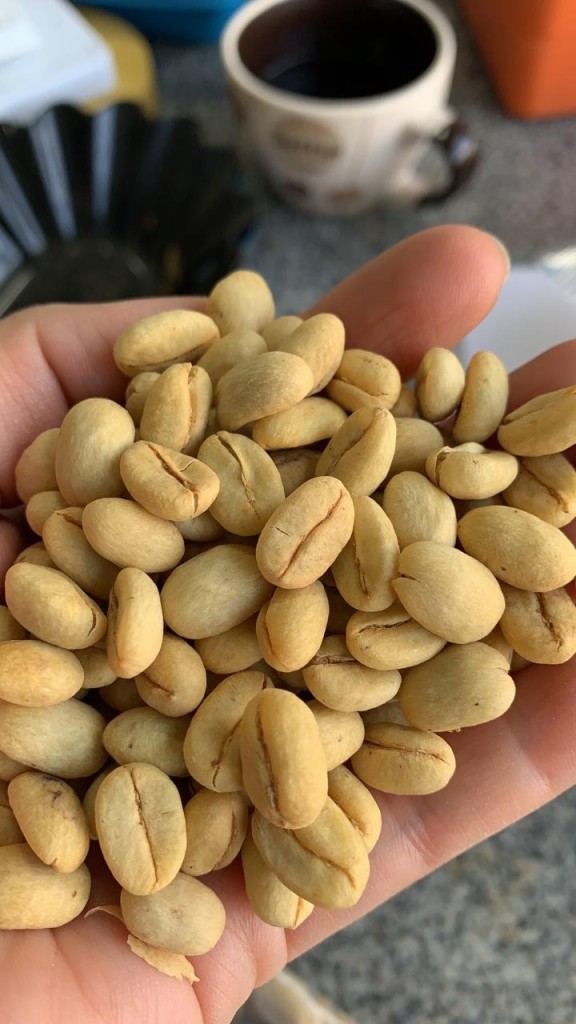 Gold coffee beans? No these aren’t lightly roasted, these are green beans, still covered with their protective parchment layer. Read on!
We’ve explored how we buy coffee at the farm gate, in parchment form. We know what our producers receive for their crops and that they’re able to live good lives. The next part of the story is getting the coffee from the farm in a far off land all the way to our roastery in North Melbourne. There are many steps in this journey!
Buying coffee at the farm gate tends to be a more complicated process to get your head around than with many agricultural products. For example an egg farmer can assess the quality of their product locally (visually, by size or weight, through consumption, or x-ray machine), but a coffee grower doesn’t have similar opportunities. For a start, coffee at the farm level can only be finished so far as “parchment” form. |
|
|
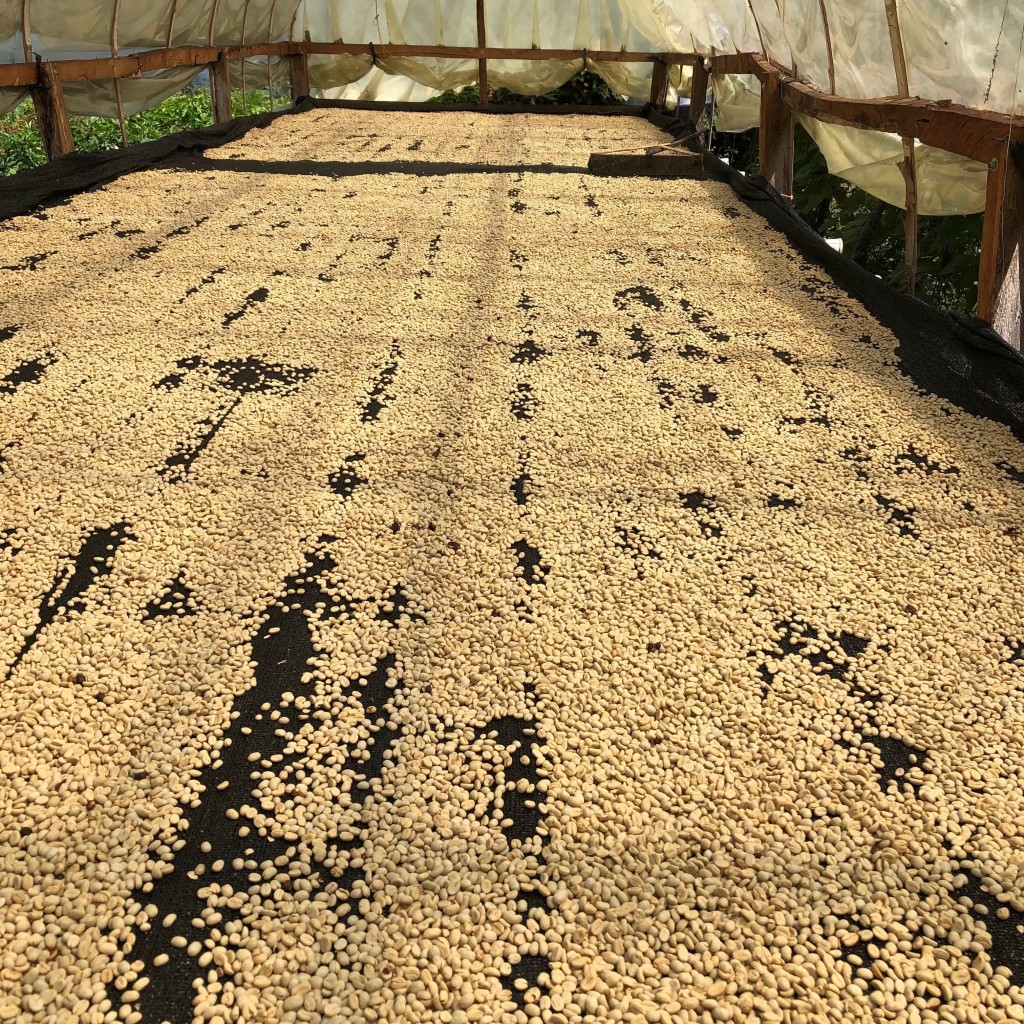 Parchment coffee drying under some shade.
As parchment coffee remains covered in its protective layer, the producer can’t just eyeball the coffee and know it’s good. It needs to be checked for yield, cup, and defects – this requires some equipment and experience, while “quality” remains in the eye of the beholder to a large extent. The buyer holds most of the cards in this transaction so the producer often loses, being told a coffee is “fine” when in fact it could be liquid gold. This can allow an unscrupulous exporter to buy low and sell high.
When we buy parchment at the farmgate, the first step is to draw a sample volume that is representative of the total lot, so a sample that is drawn from multiple bags. We use a mini-huller to remove the parchment, and a screen sorter to select the right size seeds. Then we then manually sort what remains to remove numerous types of defects – insect damage, processing damage, shrivelled or unformed seeds. |
|
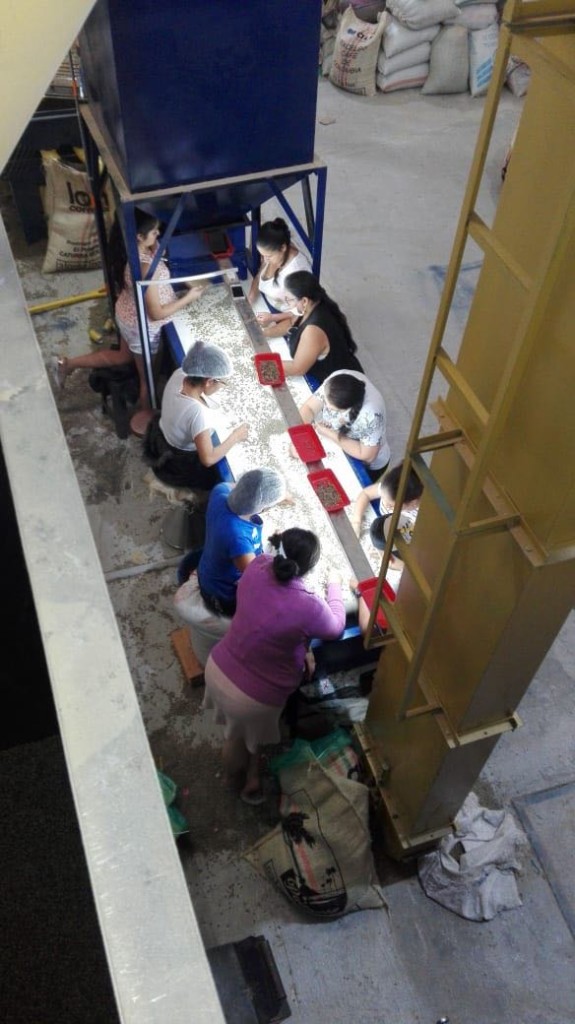 many hands working hard to make sure your coffee tastes best.
At this point, a small volume is roasted and cupped. We use a device to check the humidity level, and importantly, the water activity level of the coffee. This relates to potential for microbial activity to still be occurring unfavourably.
Once satisfied by these processes, we can give the confirmation of purchase. We’re trusting that the sample taken is truly reflective of the coffee in toto, and that the lot hasn’t been subjected to changing humidity or high temperatures since the sample was drawn. We use various safeguards for this, but it’s not an exact science. It’s an agricultural product after all, and there are many hands involved in the process.
Can you see why a roaster might choose to purchase beans from an importer, reducing the risks and costs involved in sourcing green coffee?
But the coffee hasn’t even left the farm yet, so back to our adventure… |
|
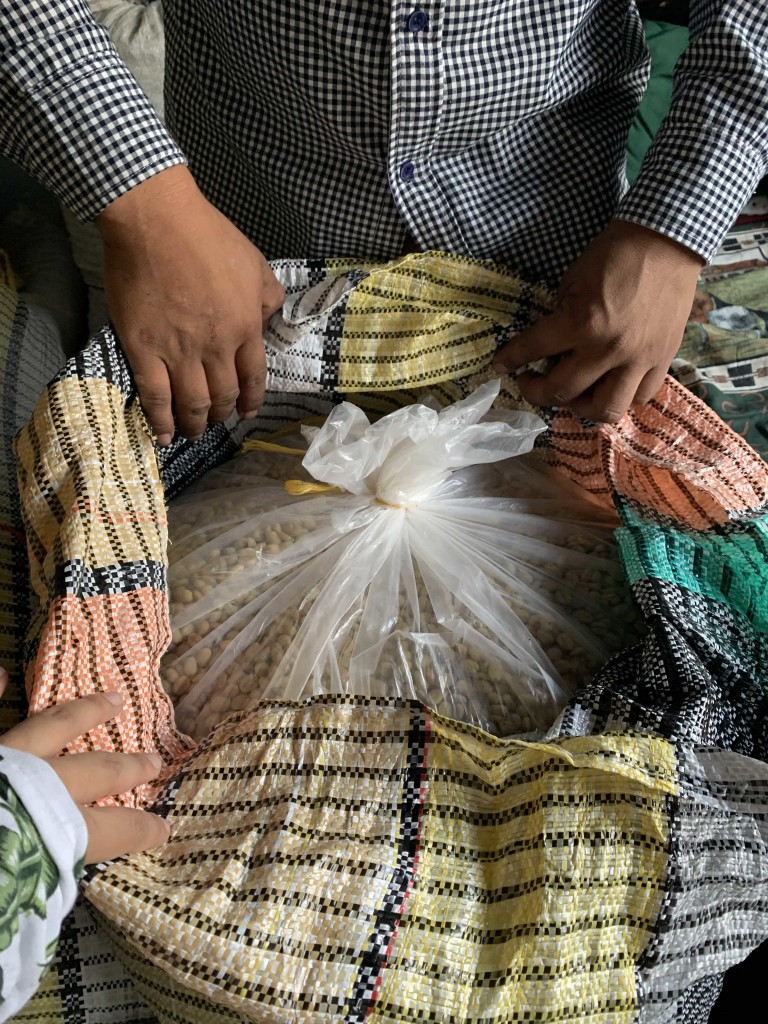 beautiful parchment delivery from a producer in Colombia
After purchase approval at the farm, we request confirmation that the lot of coffee corresponding to the sample is intact and unchanged by humidity. The price for the parchment form coffee is agreed, as well as premiums paid for agricultural specifics (like application of organic inputs of lieu of synthetic), and then the coffee is transported to a milling facility.
Upon arrival at the mill and after basic checks are undertaken the producer is paid (if they haven’t already been via an advance or micro-loan). This means the producer is often paid two or three months before the green coffee arrives in Australia, forming one of the main “on-costs” involved in buying at farm level – cost of finance.
Milling removes parchment, defects and undersized seeds, leaving what is called in Spanish the “oro” (gold) – green coffee. Fique or hessian bags are printed with the producer’s name, and the coffee is packed within. A plastic liner called grainpro is used also, protecting the coffee from humidity, oxygen, and dust. |
|
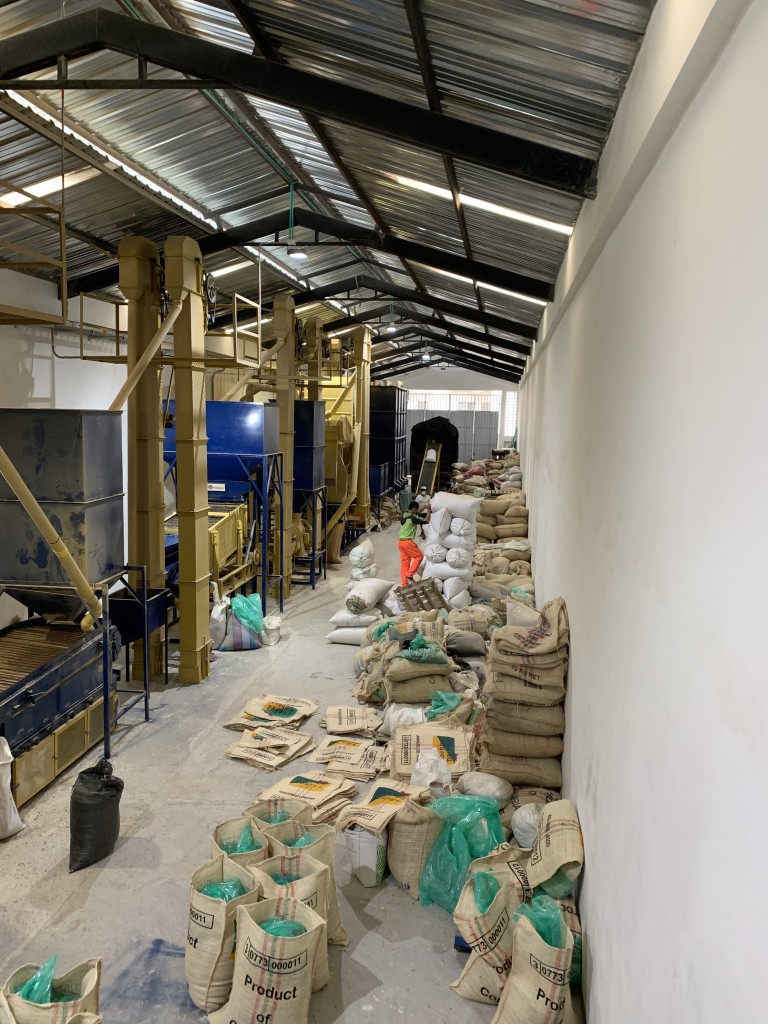 Green coffee is loaded into protective Grainpro and then into printed bags for export. Export documents are then prepared, a shipping booking is made, and a container is assigned and packed. The container is taken to the port, and export taxes as well as local and maritime insurances are paid before shipping can get underway.
The coffee will arrive at Port Melbourne anything up to two months later, and then import procedures can get underway, such as x-rays and other inspections for foreign food matter or insects. Once Australian Quarantine and Inspection Service is happy, the container is unpacked and the coffee transferred to pallets for storage. It’s an exciting day when the coffee is finally delivered to our warehouse!
When the coffee arrives at Small Batch HQ, samples are again drawn from multiple bags of the same lot for sample roasting and cupping before we decide on the best application for that lot.
Such are the steps from farm-gate to arrival at the roastery, in a nutshell. You can see how the many steps involved can result in a lack of transparency and make it hard to know who’s getting the biggest piece of the pie. You can also see how tempting it might be to cut corners (and costs). But knowing our producers means we’re as much invested in their long term sustainability as our own, and reinforces our commitment to empowering them to continue doing what they do best. |
|
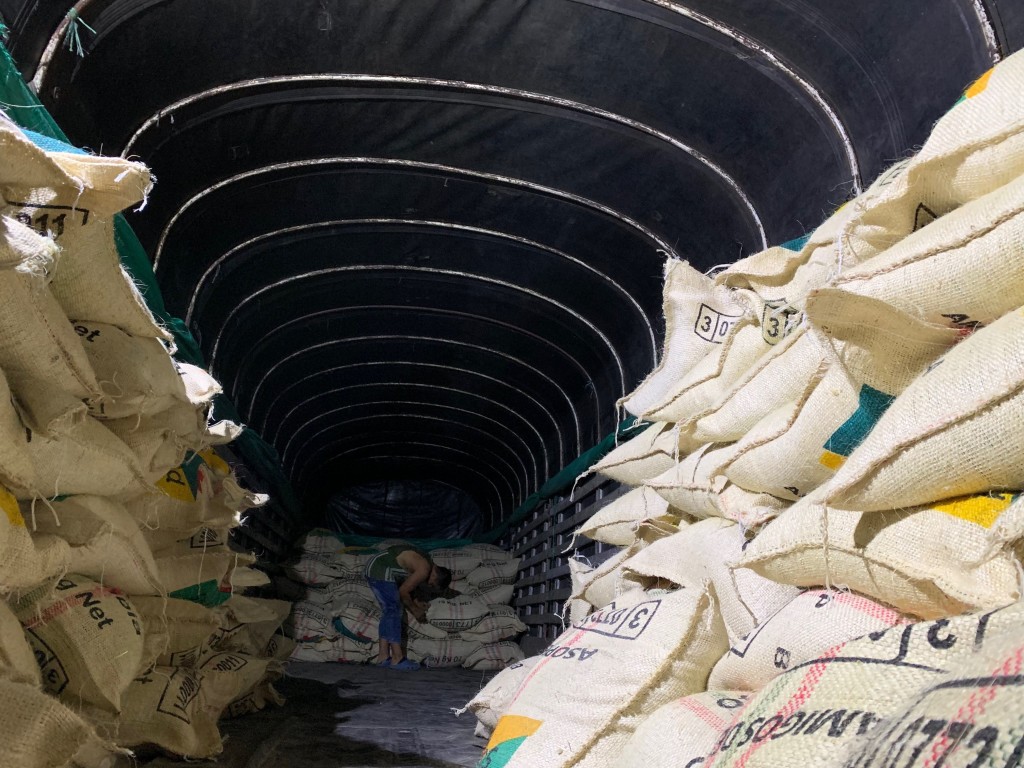 For these bags the next stop is Melbourne, but for us, we will be exploring Colombia! Next, we’ll head to Colombia, where our sourcing program is most fully manifest. We’ll meet some of the producers we work with there and explore our peer-to-peer training program in regenerative farming.
Thanks for coming on the adventure with us. As always, reach out with any questions you have, and follow us on Instagram for regular updates.
#powertotheproducer
#theygetwhatyoupayfor |
|
|